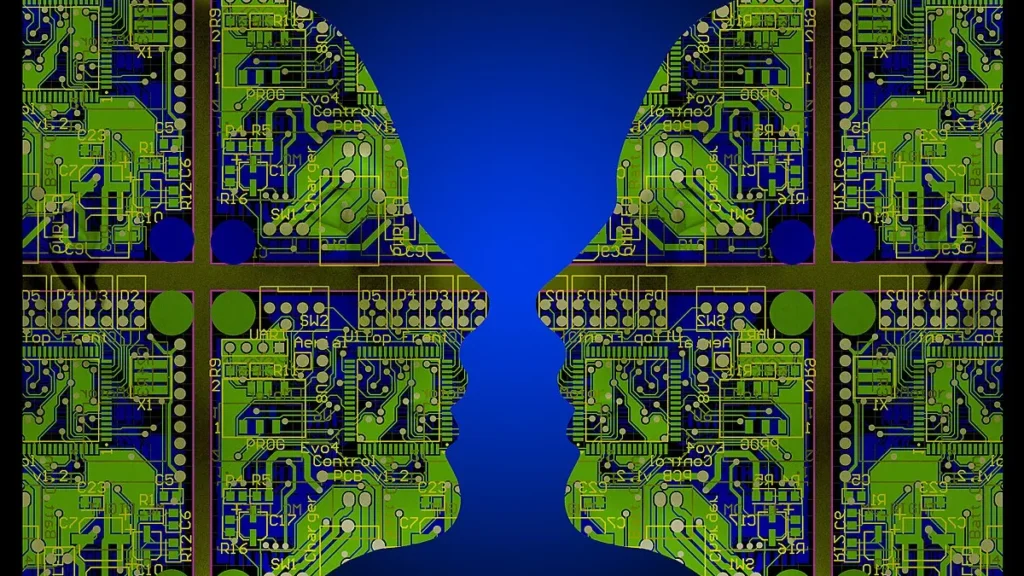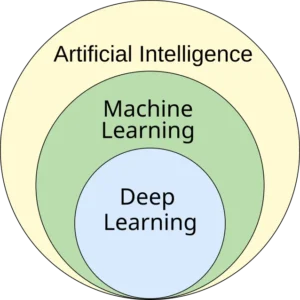Introduction to Technological Innovation
Technological innovation is reshaping our world, from artificial intelligence (AI) enhancing healthcare to renewable energy powering sustainable cities. These advancements promise better lives but also bring complex challenges, like job changes and ethical dilemmas. Let’s explore how these innovations might change the future, keeping it simple and approachable.
Table of Contents
Key Areas of Impact
- AI and Machine Learning: AI is already in voice assistants and could boost the economy by trillions, but it raises concerns about job losses and bias in algorithms.
- Renewable Energy: Solar and wind are growing fast, potentially tripling capacity by 2030, helping fight climate change, but needing more grid infrastructure.
- Biotechnology: CRISPR is curing genetic diseases, like sickle cell, but sparks debates on ethics, like altering human DNA.
- Robotics and IoT: Robots automate industries, and IoT connects smart homes, yet both face security and privacy risks as devices multiply.
This overview shows a future full of potential, balanced by the need for careful management to ensure benefits for all.
Comprehensive Analysis of Technological Innovation’s Future Impact

Credits: Wikimedia Commons
This detailed exploration delves into how technological innovation is poised to reshape our future, covering key areas like AI, renewable energy, biotechnology, robotics, and the Internet of Things (IoT). Drawing from extensive research and data, we’ll examine current states, future potentials, and societal impacts, while addressing challenges and ethical considerations. This analysis aims to provide a thorough understanding for readers seeking depth beyond the basics, ensuring a balanced view of opportunities and risks.
Introduction: The Transformative Power of Technology
Imagine a world where diseases are eradicated before they spread, where clean energy powers our cities without harming the planet, and where artificial intelligence handles mundane tasks, freeing humans to pursue creative endeavors. This is not science fiction; it’s the future shaped by technological innovation. However, this future also brings challenges: job displacement due to automation, ethical dilemmas in AI, and privacy concerns in an increasingly connected world. In this article, we’ll explore how technological innovation is set to transform our future, examining both the promises and the pitfalls as of April 9, 2025.
Key Areas of Technological Innovation and Their Future Impact
Artificial Intelligence and Machine Learning
Artificial Intelligence (AI) is revolutionizing industries by enabling machines to learn from data and perform tasks that typically require human intelligence, from self-driving cars to personalized medicine.

Credits: Wikimedia Commons
- Current State: AI is already integrated into daily life, used in voice assistants like Siri, recommendation systems like Netflix, and fraud detection in banking. A report by PwC highlights its pervasive presence, noting its role in enhancing operational efficiencies (PwC AI Study).
- Future Potential: Research suggests AI could contribute up to $15.7 trillion to the global economy by 2030, with significant boosts in China (26% GDP increase) and North America (14.5% GDP increase), as per the same PwC report. This growth is driven by increased productivity ($6.6 trillion) and consumption effects ($9.1 trillion).
- Impact: The evidence leans toward AI enhancing productivity and creating new job opportunities, particularly in tech-driven sectors. However, it also poses risks, such as job displacement, with estimates suggesting 800 million jobs could be lost to automation by 2030, according to a United Nations report (UN Digital Impact). Public discourse on X reflects concerns, with the World Bank noting rising youth unemployment and GenAI reshaping jobs (World Bank X post), and experts like Emad Mostaque discussing potential needs for Universal Basic Income (UBI) due to rapid societal changes (EMostaque X post).
In healthcare, AI is making significant strides in diagnosis. For example, AI algorithms can analyze medical images like X-rays and MRIs to detect abnormalities, with Philips integrating AI into CT workflows to enhance image quality and streamline operations (Philips AI Healthcare). Spectral AI uses machine learning to assess wound severity from photographs, improving patient outcomes (Spectral AI Blog).
Robotics and Automation
The robotics industry is experiencing rapid growth, driven by automation demands across manufacturing, logistics, and services, with significant market expansion projected.

Credits: Wikimedia Commons
- Current State: In 2023, global robot installations reached 46,106 units in Japan, down 9% from 2022, but China remains the largest market, per the International Federation of Robotics (IFR Robotics Report). Reports indicate the market was valued at $67.9 billion in 2023, expected to grow to $165.2 billion by 2029 at a CAGR of 16.1%, according to BCC Research (BCC Robotics Market).
- Future Potential: Mordor Intelligence projects the market to reach $178.63 billion by 2030, growing at a CAGR of 12.17% from 2025, with service robots, like those in logistics and healthcare, seeing a market volume of $40.58 billion in 2025, per Statista (Mordor Robotics Market, Statista Robotics Forecast).
- Impact: Robots are transforming industries, with Amazon using them in warehouses for efficiency and Boston Dynamics’ Spot robot employed for inspection and data collection. However, this automation raises concerns about job displacement, particularly in manufacturing, and the need for worker reskilling, as noted in European Commission reports (EU Tech Impact).
Biotechnology and Genetic Engineering
Biotechnology, particularly CRISPR-Cas9, is revolutionizing gene editing, offering new treatments for genetic diseases and applications in agriculture.
- Current State: CRISPR technology has advanced significantly, with the FDA approving CASGEVY in December 2023, the first CRISPR treatment for sickle cell disease, developed by Vertex and CRISPR Therapeutics (FDA Approval). This marks a milestone in gene therapy, enabling precise DNA edits to correct genetic mutations.
- Future Potential: Research suggests CRISPR could expand to treat other genetic disorders, like cystic fibrosis, and enhance agriculture by developing disease-resistant crops. Advances in base editing and prime editing are making the technology more precise, reducing off-target effects, as discussed in Harvard Gazette articles (Harvard CRISPR Advances).
- Impact: The potential to cure diseases is immense, but ethical considerations arise, such as the risk of designer babies and unintended ecological impacts in agriculture. This technology’s dual nature requires careful regulation to balance innovation with safety.
Renewable Energy and Sustainability
The renewable energy sector is booming, crucial for combating climate change and reducing fossil fuel dependence, with significant growth projections.
- Current State: In 2023, global renewable capacity additions increased by almost 50%, reaching 510 GW, with solar PV accounting for three-quarters, per the International Energy Agency (IEA) (IEA Renewables 2023). Solar PV prices declined by almost 50% in 2023, enhancing cost-competitiveness, with 96% of new solar PV and onshore wind projects cheaper than new coal and gas plants.
- Future Potential: The IEA forecasts renewable electricity generation to reach 42% of total electricity by 2028, with wind and solar making up 25%, and over 130 governments, including the EU, agreed at COP28 to triple capacity to 11,000 GW by 2030 (IEA Renewables Forecast). China is leading, expected to reach its 2030 target six years early, accounting for 60% of new capacity by 2028.
- Impact: This growth supports sustainability goals, creating 24 million new jobs by 2030 through green practices, per the International Labour Organization, but faces challenges like grid infrastructure and financing in emerging economies (UN Energy Impact).
Internet of Things (IoT) and Smart Technologies
IoT is expanding rapidly, connecting devices to enhance efficiency in homes, cities, and industries, with significant market growth projected.
- Current State: The global IoT market was valued at $714.48 billion in 2024, per Fortune Business Insights, with enterprise IoT spending reaching $269 billion in 2023, growing 15% year-over-year, according to IoT Analytics (Fortune IoT Market, IoT Analytics Update). By 2023, there were 16.6 billion connected IoT devices, expected to grow to 18.8 billion by 2024, per IoT Analytics.
- Future Potential: Projections indicate the market will reach $4,062.34 billion by 2032, at a CAGR of 24.3%, driven by 5G and cloud computing advancements. Statista forecasts a market volume of $1,560.00 billion by 2029, growing at a CAGR of 10.17% from 2025 (Statista IoT Forecast).
- Impact: IoT enables smart cities, with sensors monitoring traffic and energy, and industrial IoT facilitating predictive maintenance. However, security and privacy risks escalate as devices multiply, requiring robust cybersecurity measures, as highlighted in McKinsey reports (McKinsey IoT Opportunities).
Challenges and Ethical Considerations
While technological innovation offers numerous benefits, it also presents challenges and ethical dilemmas that require careful navigation.
- AI Challenges: Algorithmic bias, data privacy, and job displacement are significant concerns. For instance, AI systems can perpetuate biases if trained on skewed data, and the rapid adoption of GenAI is seen as a “tsunami” impacting 60% of jobs in advanced economies, per a Reuters report citing PwC (Reuters AI Impact). Public discussions on X, like those by Andrew Curran, highlight policy debates on high-impact AI uses (AndrewCurran_ X post).
- Biotechnology Ethics: Gene editing with CRISPR raises questions about designer babies, ecological impacts, and unintended consequences, necessitating ethical frameworks to guide research and application, as discussed in ScienceDirect reviews (ScienceDirect CRISPR Ethics).
- IoT Security: As IoT devices proliferate, security vulnerabilities and data privacy become critical, with reports noting increased cybercrime rates, per Forbes articles (Forbes Tech Direction). Robust regulations are needed to protect users.
To address these, developing robust regulations and ethical frameworks is essential, ensuring technology is used responsibly and for societal benefit, as emphasized in World Economic Forum insights (WEF Tech Trends).
Conclusion: Balancing Innovation and Responsibility
Technological innovation is set to transform our future in profound ways, from revolutionizing healthcare and energy to automating industries and connecting the world. While the opportunities are immense, with AI potentially adding trillions to the economy and renewables tripling capacity, it’s crucial to address the accompanying challenges—job displacement, privacy concerns, and ethical dilemmas—to ensure these advancements lead to a better, more equitable world. As we stand on the brink of this technological revolution, the choices we make today, guided by research and public discourse, will shape the future for generations to come.
If the article was interesting, consider sharing it with your tech-loving friends, and subscribe to my newsletter and push notifications for FREE to stay updated with the latest tech news and gadgets. Thank you for reading this further.
Disclaimer: The article is written based on information available on different sources across the web and presented in an easy-to-read to read format. Make sure to verify the information and do not rely on this post. We do not take any kind of responsibility.
FAQ – Frequently Asked Questions
What is the impact of AI on the future job market?
Research suggests AI could automate many jobs, potentially displacing 800 million by 2030, per UN reports, but also create new roles in tech, requiring reskilling efforts.
How is renewable energy transforming the energy sector?
It seems likely renewables will triple capacity to 11,000 GW by 2030, per IEA, with solar and wind becoming cheaper, reducing fossil fuel reliance and creating green jobs.
What are the ethical considerations of gene editing with CRISPR?
The evidence leans toward concerns like designer babies and ecological impacts, needing ethical frameworks to balance innovation, as highlighted in ScienceDirect reviews.
How does IoT contribute to smart city development?
IoT enables traffic monitoring and energy management in smart cities, with market growth to $4 trillion by 2032, per Fortune Business Insights, enhancing urban efficiency.
What are the security challenges in IoT?
As IoT devices grow to 18.8 billion by 2024, per IoT Analytics, security risks like data breaches increase, requiring robust cybersecurity, per Forbes insights.